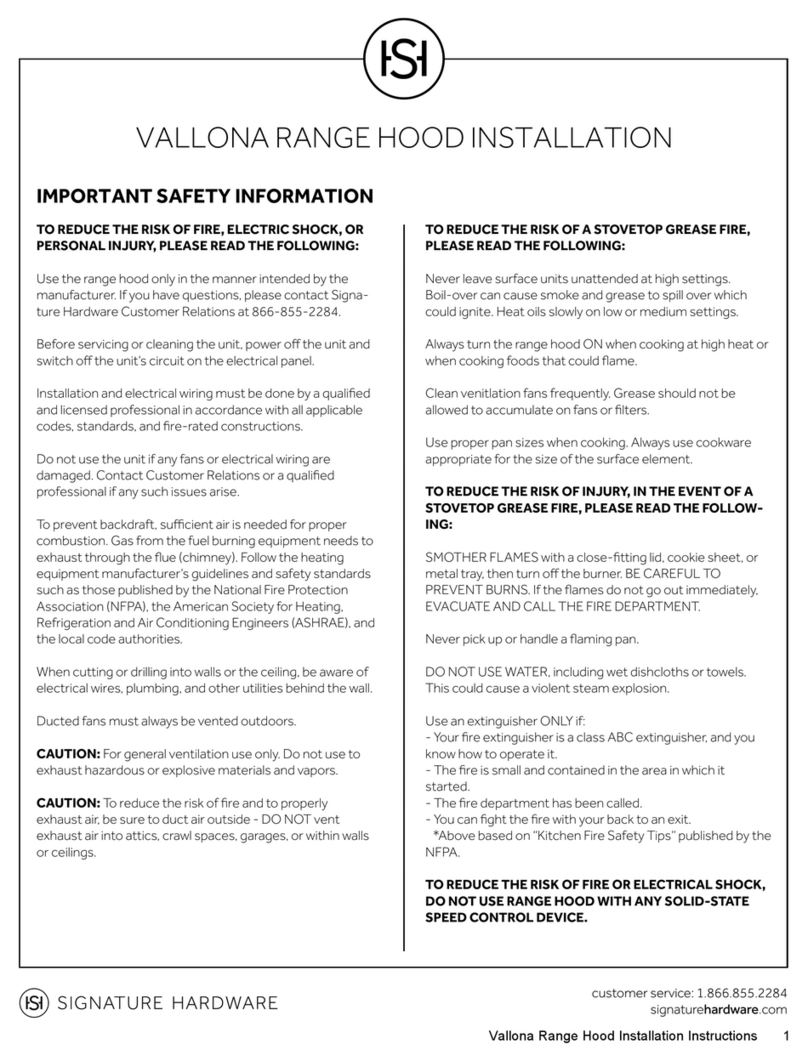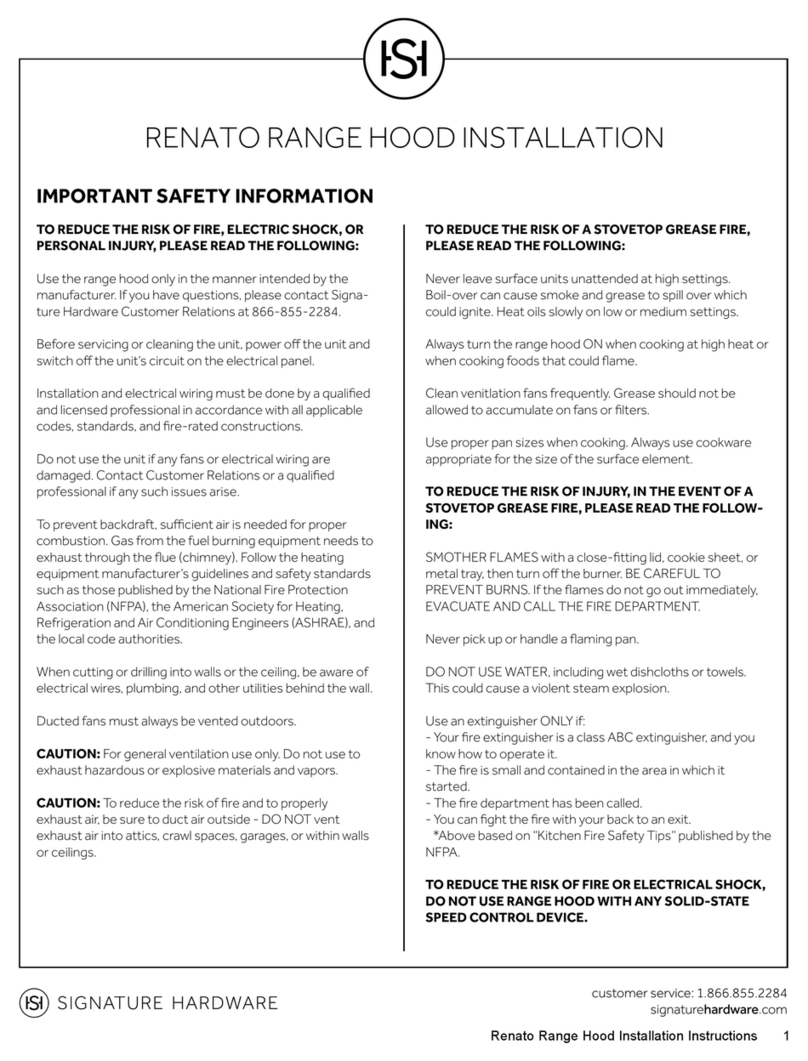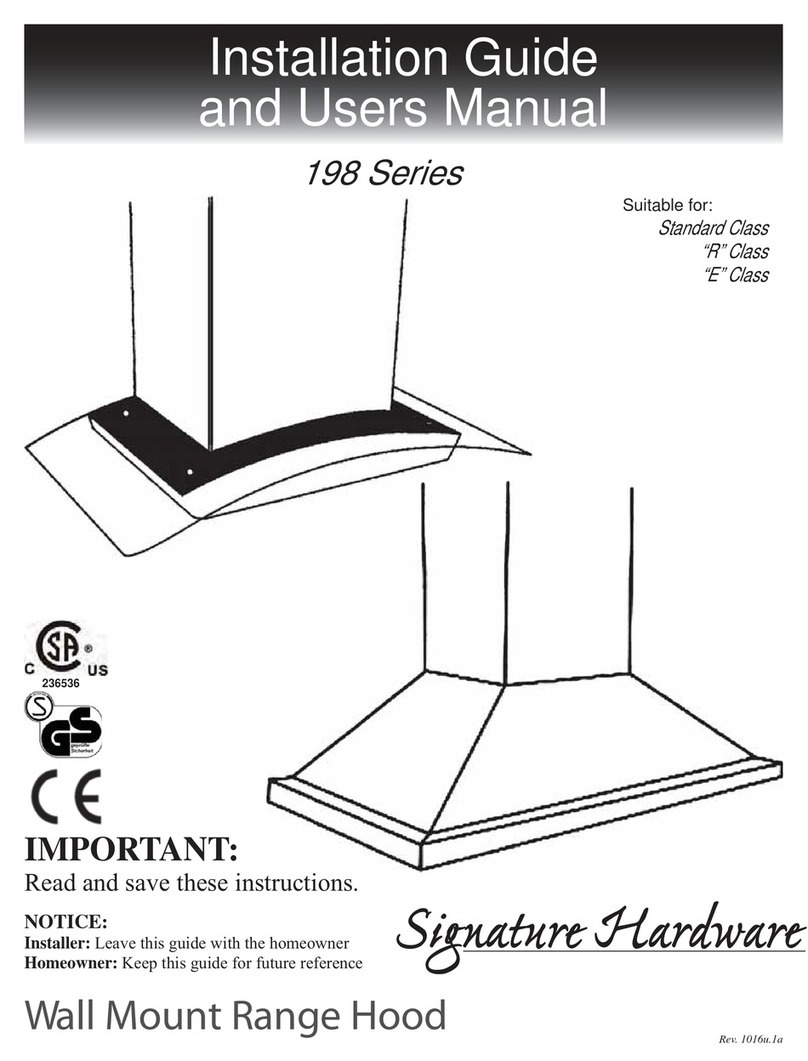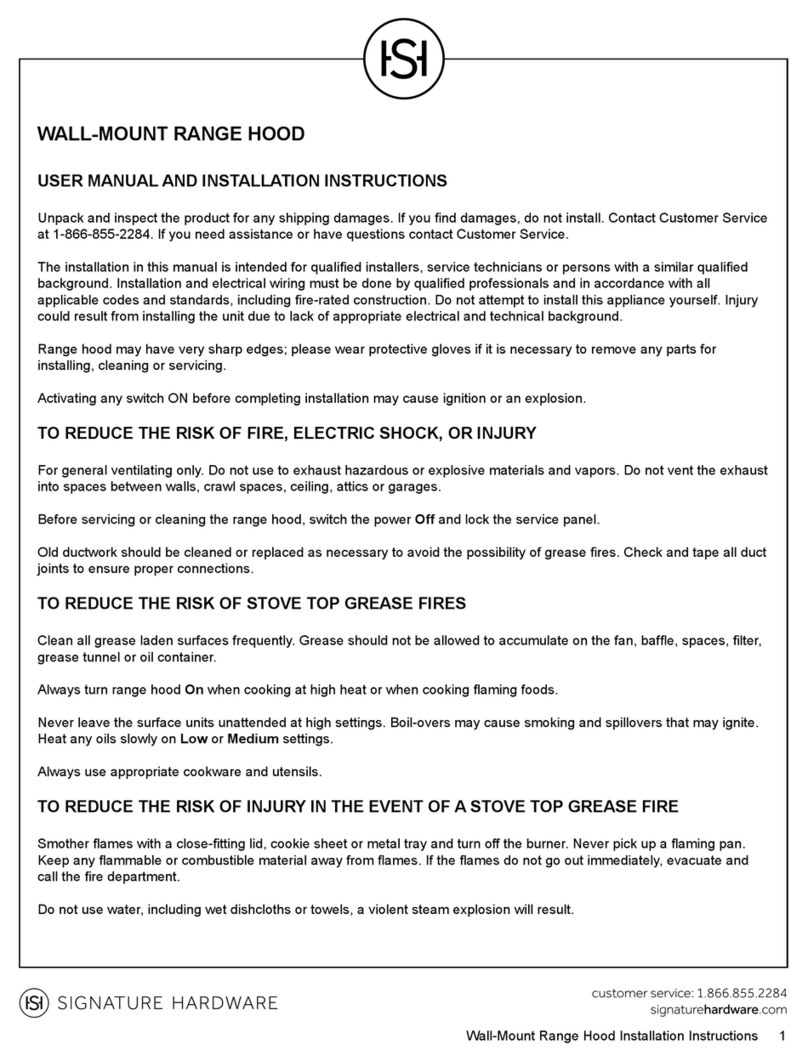
8Island Mount Range Hood Installation Instructions
2. Due to the weight and size of this unit, please make sure that the sup-
port system or framework being used is stable and secure in the wall.
3. Put a thick, protective covering over counter top, cook top or range to
protect from damage or dirt. Remove any hazardous objects around the
area when installing.
4. Mark the locations of the support mounting bracket holes, vent cutout
(if used) and power supply cable cutout on the ceiling. Use drill and saber
saw or keyhole saw to cut openings for power supply cable and vent (see
“Venting Requirements” and “Electrical Requirements”).
5. If venting to the outside, install vent system (see “Venting
Requirements”). Use caulking to seal exterior wall or roof openings.
6. Disconnect main electrical supply, prepare and run electrical wiring through ceiling or wall. Leave approximately 12"
of electrical cord hanging from the ceiling. Do not restore power until wiring is completed.
7. Disconnect power cord, remove the aluminum lter by pressing on the latch toward the direction of solid arrow while
holding the metal handle, gently pull the aluminum lter toward the direction of dashed arrow as shown in gure 1.
8. If charcoal lter is present, unscrew the 2 screws and remove the lter.
9. Set aside the aluminum lters and charcoal lter until the range hood is properly installed.
10. If the range hood comes with a glass canopy and has not already been mounted to the hood, loosen the 4 canopy
screws and washers from the hood top, carefully place the canopy on the hood top, and loosely tighten the 4 canopy
screws along with washers. Do not put excessive pressure against the glass.
INSTALLATION
1. As illustrated in Figure 1A, drill four (4) holes with diameter not exceeding 5/8" and
depth of 3" to 3-1/2" into the false ceiling. Fasten two (2) hexagonal wood screws at
two (2) of these holes opposite from each other, reserve approximately 1/8" for the top
support plate as shown in Figure 1B. Cut out a circle of 7-1/2" diameter for duct work.
Use appropriate anchors for your ceiling composition:
Wood ceiling: Use the provided hexagonal wood screw.
Sheet rock ceiling: Attach top supporting plate to ceiling joists or stud blockings if possible. If ceiling joists or
stud blockings are not available, it is required to build a supporting structure behind the sheet rock for best
weight support.
Concrete ceiling: Use designated screws (not provided).
2. Place support frames inside the top support plate, adjust support frames to lengh required and lock the support
frames using sixteen (16) 4mm x 8mm Phillips head tapping screw as shown in Figure 2.
3. Align the holes in top support plate with two (2) screws on the ceiling. Push upward (1) and slide forward (2) so the
top of the supporting plate locks into place, see Figure 3. Fasten two (2) remaining hexagonal wood screws ,
insert two (2) more in the remaining holes and fasten them.































